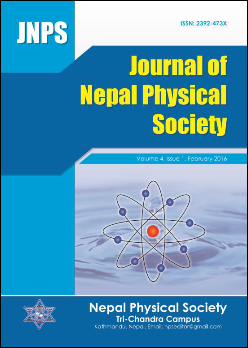Hadamard Coded Modulation for Visible Light Communication
DOI:
https://doi.org/10.3126/jnphyssoc.v4i1.17342Keywords:
Visible Light Communication (VLC), Wi-Fi, Li-Fi, Light Emitting Diodes (LEDs), Radio Spectrum, BandwidthAbstract
In the recent days, Visible Light Communication (VLC), a novel technology that enables standard Light-Emitting-Diodes (LEDs) to transmit data, is gaining significant attention. However, to date, there is very little research on its deployment. The enormous and growing user demand for wireless data is placing huge pressure on existing Wi-Fi technology, which uses the radio and microwave frequency spectrum. Also the radio and microwave frequency spectrum is heavily used and overcrowded. On the other hand, visible light spectrum has huge, unused and unregulated capacity for communications (about 10,000 times greater bandwidth compared to radio spectrum). Li-Fi, the wireless technology based on VLC, is successfully tested with very high speed in lab and also implemented commercially. In the near future, this technology could enable devices containing LEDs, such as car lights, city lights, screens and home appliances, to form their own networks for high speed, secure communication. In this paper the performance analysis of Hadamard Coded Modulation (HCM) for Visible Light Communication (VLC) is carried out. Its performance is compared with that of Orthogonal Frequency Division Multiplexing (OFDM). Also wide overview of need of VLC, applications of VLC and design challenges for VLC are observed. The potential application areas of VLC that are identified include smart lighting of buildings, vehicular communication, defense & security, indoor positioning, road safety, hospitals & healthcare, aviation etc. Aside from the high bandwidth availability of VLC, it has the advantages of very high speed, enhanced security of local networks, less susceptible to interference, less expensive due to co-existence with illumination devices and obviously no fear of health hazards due to radiation.
Journal of Nepal Physical Society
Volume 4, Issue 1, February 2017, Page: 93-96
Downloads
Downloads
Published
How to Cite
Issue
Section
License
All right reserved. No part of this Journal may be reproduced in any form or by any electronic or mechanical means, including information storage and retrieval system, without permission in writing from the publisher, except by a reviewer who may quote brief passage in a review. The views and interpretation in this journal are those of author(s) and they are not attributable to the NPS.




